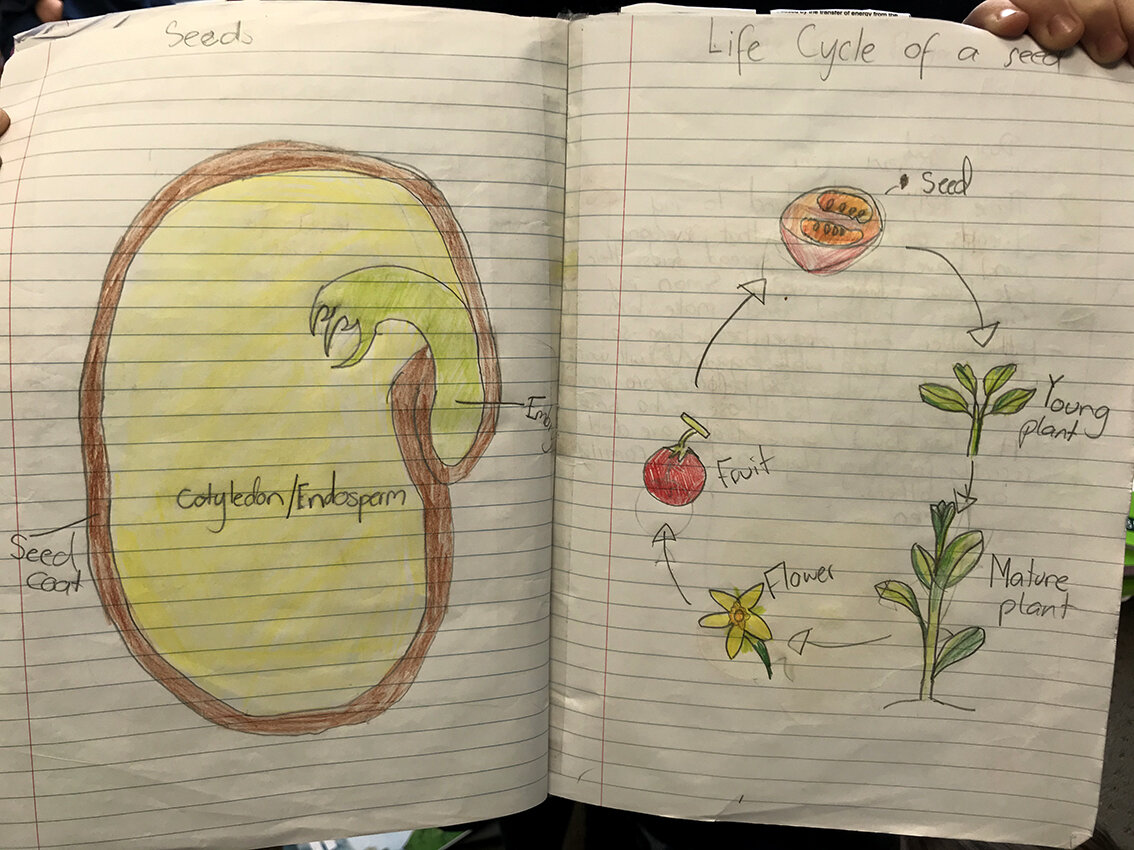Winter isn’t Slowing Us Down
What an incredible, full month it’s been. We have had many days with torrential rain but we didn’t let that stop us from learning about soil, seeds, plants, and the garden. During June, we learnt about seed germination, the parts of the seed and how the mother plant packs the seed full of cotyledon or endosperm – this is the food supply which we like to call “the lunchbox”. This lunch box provides the initial food for the embryo (tiny plant) to grow. It’s kind of like our parents packing our own lunch boxes so we can grow too.
We then moved on to the lifecycle of a plant and how everything in nature works in circles. We considered and discussed where we get things like oil, metal and plastic and also talked about how EVERYTHING you see around you came from nature somehow – wood/paper is trees, plastic came from oil, metal we mined for in the ground and more!.
Plants are astonishing, we discussed photosynthesis and how it’s the process of plants eating sunlight and using it to turn carbon dioxide and water into food for us to eat. How lucky are we! Plants need four things to survive and thrive - water, sunlight, carbon dioxide and love/care. When plants breathe in carbon dioxide, they breathe out oxygen. Again, we breathe in oxygen and out carbon dioxide, so how fortunate are we to have plants.
Alongside all of this learning we prepared and planted our garlic. We did this by splitting up the bulbs into cloves and then soaking the cloves in a fertiliser mix of worm castings and worm juice. Once it had been soaking for an hour, we planted it out, one hand space apart – this will give it enough room to grow. Garlic should always be planted pointy side up and is best planted two times its height under the ground. We then topped it off with a good layer of mulch to help suppress the invasive weeds and keep the garlic nice and warm through the winter.
We also learnt about soil conditioning. Soil conditioning is adding nutrients (or food) to the soil to help feed the microorganisms. Microorganisms are those teeny tiny bugs that live in the soil. Having healthy soil means having a lot of life in the soil. Healthy soil means healthy plants, which means healthy humans! You can do a quick easy soil test by looking out for worms. Worms are amazing in the garden! If you have them, keep them there. They are adding more goodness to your soil just by living there and are working alongside the microorganisms which you can’t see with your naked eye. We added things like banana peel fertiliser, coffee grounds, crushed eggshells and worm castings from our school worm farms – Thanks Leo from Why Waste. Next month we are going to collect some seaweed to add and learn about the benefits of seaweed.
We have been keeping our seedlings lovely and warm, with a steady watering in the classroom for the past month. We decided to test out how well the seedlings would grow in the garden over the holidays compared to taking some home in mini green houses and keeping them protected from the weather for another couple weeks to get stronger. We soaked some seedlings in worm wees and water to give them the best start before we planted them in the garden. It was a freezing cold day and one child said “my fingers are like icicles!”. We will plant the other ones out after the school holidays and will see if there is any difference in size or growing speed depending on letting them get stronger in a greenhouse for longer. Keep an eye out next month to see the results!




